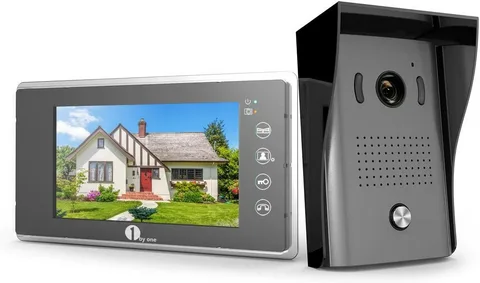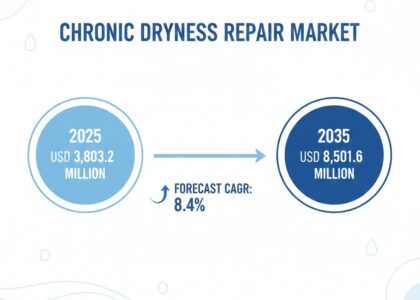The Video Intercom Device Market will grow substantially between 2025 and 2035, fueled by increasing demand for smart home security, AI-driven surveillance, and IoT-based communication systems. The market is expected to reach USD 47.44 billion in 2025 and grow to USD 164.28 billion by 2035, with a compound annual growth rate (CAGR) of 13.2% during the forecast period.
In an increasingly connected world where convenience, safety, and control are paramount, the way we manage access to our homes, offices, and facilities is evolving. At the intersection of surveillance and communication lies a technology that’s quietly becoming essential: the video intercom device.
Once limited to basic audio systems in apartment buildings, video intercoms have transformed into intelligent, multifunctional access management tools. With high-definition video, app-based control, and integration with smart home ecosystems, these devices are redefining how people interact with entry points—bringing together real-time monitoring, secure access, and enhanced user experience in one compact solution.
Request Your Sample and Stay Ahead with Our Insightful Report!
https://www.futuremarketinsights.com/reports/sample/rep-gb-1000
Beyond the Doorbell: From Entry Management to Experience Enhancement
Video intercom devices are no longer just a method to speak to someone outside a door. Modern systems allow residents, employees, and building managers to see visitors, grant or deny access remotely, and even log interactions. With features like facial recognition, motion detection, and cloud recording, video intercoms offer far more than convenience—they provide a powerful layer of security and control.
These solutions are now widely adopted across residential complexes, corporate buildings, healthcare facilities, educational institutions, and industrial sites, offering customized access solutions based on need, time, and identity.
Smart, Connected, and Always On
The evolution of video intercom devices is closely tied to advancements in connectivity and cloud technology. Wi-Fi and Ethernet-enabled systems now offer seamless two-way communication, high-resolution video feeds, and remote control via smartphones or desktops.
Integration with smart home platforms and IoT ecosystems means users can connect their video intercoms with door locks, alarms, lights, and even virtual assistants—creating a centralized command center for access and surveillance. Whether checking on a delivery or granting access to a guest while away, these devices offer full control at your fingertips.

Enhancing Security with AI and Advanced Features
Artificial intelligence is taking video intercom capabilities to the next level. Face and object recognition, behavioral analytics, and anomaly detection are being built into modern systems, allowing for more intelligent access control and threat detection.
For multi-tenant buildings, commercial complexes, or gated communities, AI-powered intercoms can automate visitor management, reduce reliance on human security personnel, and provide detailed access logs—all while improving operational efficiency.
Versatility Across Sectors
From luxury residential towers to government buildings and small businesses, video intercom devices are being deployed in a wide range of environments. In the healthcare sector, they facilitate contactless communication between patients and staff. In schools, they help control access to secure areas. In warehouses and logistics hubs, they streamline visitor verification and package drop-offs.
Each use case demands tailored features—be it rugged outdoor units for harsh weather, vandal-resistant enclosures for high-risk zones, or mobile-enabled solutions for remote locations.
Challenges in Integration, Privacy, and User Experience
Despite the growing popularity, deploying video intercom systems at scale comes with challenges. Integration with existing access control infrastructure, ensuring cybersecurity, and maintaining user-friendly interfaces are critical considerations.
Privacy is also a major concern—particularly with features like continuous video recording and facial recognition. Manufacturers and building operators must balance functionality with compliance, offering secure data management and transparent policies to gain user trust.
Thorough Market Evaluation: Full Report
https://www.futuremarketinsights.com/reports/video-intercom-devices-market
Driven by Urbanization and Smart Infrastructure
As urban living becomes more vertical and infrastructure becomes more intelligent, the demand for secure, scalable access solutions is rising. Smart cities and digital buildings are incorporating video intercoms as core components of their security and communication frameworks—supporting automated entry, emergency coordination, and resident convenience.
The rise of property management platforms and real estate digitization is also fueling adoption, with centralized dashboards allowing property managers to monitor and control access across multiple sites in real time.
Small Device, Big Impact
While video intercom devices may appear simple from the outside, they represent a convergence of communication, security, and automation. With the ability to visually verify, interact, and grant access instantly, they are enhancing peace of mind and operational control for users around the world.
As digital lifestyles expand and safety expectations rise, video intercom systems are emerging as must-have tools in modern access management. Quietly mounted at doors and gates, they are shaping the future of how we connect, protect, and welcome—ensuring that every entry point becomes smarter, safer, and more responsive.





